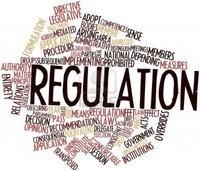Last update: 5 November 2013
The regulatory body for approval of medicines in the European Union (EU) is the European Medicines Agency (EMA). The agency is responsible for the scientific evaluation of medicines developed by pharmaceutical companies for use in the EU.
EMA defines nanotechnology as the use of tiny structures – less than 1,000 nanometres across – that are designed to have specific properties.
In medicine, nanotechnology has only been partially exploited. It is being investigated as a way to improve the properties of medicines, such as their solubility or stability, and to develop medicines that may provide new ways to:
- deliver medicines to the body
- target medicines in the body more accurately
- diagnose and treat diseases
- support the regeneration of cells and tissues.
Nanomedicines and nanosimilars (nanomedicines that are claimed to be similar to a reference nanomedicine) may be approved either at the national level or via the centralized EMA procedure. The agency’s Committee for Medicinal Products for Human Use (CHMP) established an ad hoc expert group on nanomedicines in 2009, which issues recommendations on the approval or rejection of nanomedicines in the EU.
In the past, EMA has considered nanomedicines on a case-by-case basis regarding them to be similar to normal substances in that some may be toxic and some may not. However, in an attempt to address the lack of clear regulation for nanomedicines and to pave the way for nanosimilars, EMA has issued several reflection papers during 2013 with a view to developing guidelines for both nanomedicines and nanosimilars.
EMA does not yet have any guidelines for nanomedicines and nanosimilars, but the agency has the following reflection papers‡ on the subject:
1. Specific Reflection Papers
These reflection papers are specific to the type of nanomedicine or nanosimilar product and have been released with a view to developing guidelines:
Nanosimilar iron medicinal products
EMA/CHMP/SWP/100094/2011
Date: 17 March 2011
http://www.ema.europa.eu/docs/en_GB/document_library/Scientific_guideline/2011/04/WC500105048.pdf
Coated nanomedicine products
EMA/325027/2013
Date: 22 May 2013
http://www.ema.europa.eu/docs/en_GB/document_library/Scientific_guideline/2013/08/WC500147874.pdf
Nanosimilar liposomal products
EMA/CHMP/806058/2009/Rev. 02
Date: 21 February 2013
http://www.ema.europa.eu/docs/en_GB/document_library/Scientific_guideline/2013/03/WC500140351.pdf
2. Draft Specific Reflection Papers
EMA has the following draft reflection papers under public consultation with a view to developing guidelines for specific nanosimilar products:
Block copolymer micelle medicinal products
EMA/CHMP/13099/2013
Date: 17 January 2013‡
End of consultation: 1 July 2013
http://www.ema.europa.eu/docs/en_GB/document_library/Scientific_guideline/2013/02/WC500†138390.pdf
Nanosimilar intravenous iron-based nano-colloidal products
EMA/CHMP/SWP/620008/2012
Date: 25 July 2013‡
End of consultation: 28 February 2014
http://www.ema.europa.eu/docs/en_GB/document_library/Scientific_guideline/2013/09/WC500149496.pdf
EMA also organized a workshop in 2010 on nanomedicines to explore the scientific aspects of nanomedicines and enable the sharing of experience at an international level, in order to assist future developments in the field.
‡ Reflection paper
A reflection paper is developed to communicate the current status of discussions or to invite comment on a selected area of medicinal product development or a specific topic. It can provide a framework for discussion or clarification, particularly in areas where scientific knowledge is quickly evolving or experience is limited. A reflection paper does not provide direct scientific, technical or regulatory guidance, but may contribute to future development of such guidelines or related documents, as it provides clear statements on current expectations from the regulator. Therefore, it becomes possible for researchers to define the potential weak or controversial points and further clarify these with the regulators.
Related articles
More immunogenicity data needed for biosimilar mAbs
EU guidelines for biosimilars
Permission granted to reproduce for personal and non-commercial use only. All other reproduction, copy or reprinting of all or part of any ‘Content’ found on this website is strictly prohibited without the prior consent of the publisher. Contact the publisher to obtain permission before redistributing.
Copyright – Unless otherwise stated all contents of this website are © 2013 Pro Pharma Communications International. All Rights Reserved.








 0
0











Post your comment